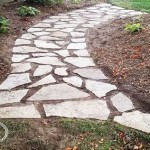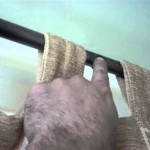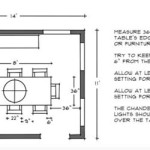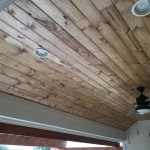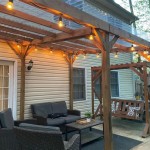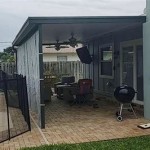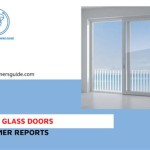Patio Glass Doors: A Comprehensive Guide
Patio glass doors serve as a vital connection between indoor living spaces and outdoor environments. They provide natural light, enhance views, and offer convenient access to patios, decks, and backyards. Selecting the right patio glass door involves understanding the various types available, their associated benefits and drawbacks, and factors influencing overall cost and performance.
This article aims to provide a detailed overview of patio glass doors, covering their different styles, materials, functionalities, and considerations for installation and maintenance. The intention is to equip homeowners and building professionals with the necessary information to make informed decisions when choosing and installing patio glass doors.
Types of Patio Glass Doors
Several distinct styles of patio glass doors are available, each offering unique aesthetic and functional characteristics. The primary types include sliding glass doors, French doors, bi-folding doors, and multi-slide doors. The choice between these options depends on factors such as available space, desired aesthetic, budget, and performance requirements.
Sliding Glass Doors: Also known as gliding doors, these doors operate on a track, with one or more panels sliding horizontally past a fixed panel. They are a popular choice due to their space-saving design, ease of operation, and relatively lower cost compared to other styles. Sliding glass doors are typically constructed with aluminum, vinyl, or wood frames and can be configured with multiple panels for wider openings.
The benefits of sliding glass doors include their affordability, simple operation, and minimal space requirements. The drawbacks, however, include a limited opening size, as only half of the door's width can be opened at any given time. Additionally, the track can accumulate dirt and debris, requiring regular cleaning to ensure smooth operation.
French Doors: French doors, characterized by their hinged design, swing inward or outward to create a wide opening. They typically feature multiple glass panes within a decorative frame, offering a classic and elegant aesthetic. French doors can be installed as single doors or as double doors, with both panels operable.
The advantages of French doors include their aesthetic appeal, wide opening capability, and ability to provide ventilation. However, they require sufficient space to swing open, which can be a limitation in smaller rooms. French doors can also be more expensive than sliding glass doors, particularly those with intricate designs and high-quality materials.
Bi-Folding Doors: Also known as folding doors or accordion doors, bi-folding doors consist of multiple panels that fold and stack against one or both sides of the opening. They create a large, unobstructed opening, seamlessly connecting indoor and outdoor spaces. Bi-folding doors are often used in modern homes and commercial buildings to maximize natural light and ventilation.
The primary benefit of bi-folding doors is their ability to create a wide, open connection between indoor and outdoor spaces. However, they can be more expensive than other types of patio doors and require careful installation to ensure smooth operation. Furthermore, the complexity of the hardware and folding mechanism can make them more prone to maintenance issues.
Multi-Slide Doors: Multi-slide doors, similar to sliding glass doors, consist of multiple panels that slide and stack against each other. They offer a wider opening than traditional sliding glass doors and can be configured with multiple tracks to accommodate numerous panels. Multi-slide doors are often used in luxury homes and commercial properties to create expansive views and seamless transitions between indoor and outdoor living areas.
The advantages of multi-slide doors include their ability to create a wide opening and their flexibility in design. They can also be customized with various features, such as motorized operation and integrated screens. However, multi-slide doors are typically more expensive than other types of patio doors and require a substantial amount of wall space to accommodate the stacked panels.
Materials and Construction
The materials used in the construction of patio glass doors significantly impact their performance, durability, and aesthetic appeal. Common frame materials include aluminum, vinyl, wood, and fiberglass. Each material offers unique advantages and disadvantages in terms of cost, insulation, maintenance, and aesthetics.
Aluminum: Aluminum frames are known for their strength, durability, and resistance to corrosion. They are a popular choice for modern homes and commercial buildings due to their sleek appearance and ability to support large glass panels. Aluminum frames are also relatively low-maintenance, requiring minimal upkeep.
However, aluminum is a poor insulator, meaning that aluminum-framed patio doors can be less energy-efficient than those made from other materials. Thermal breaks can be incorporated into the frame design to improve insulation, but this adds to the cost. Condensation can also be a problem with aluminum frames, particularly in colder climates.
Vinyl: Vinyl frames are a cost-effective and energy-efficient option for patio glass doors. They are resistant to rot, warping, and fading, making them a low-maintenance choice. Vinyl frames also offer good insulation, helping to reduce energy costs. They are available in a variety of colors and styles to complement different architectural designs.
The drawbacks of vinyl frames include their limited strength compared to aluminum or wood. They are also less customizable in terms of color and design, and they can become brittle and crack over time, particularly in extreme climates. Additionally, vinyl frames are not as environmentally friendly as wood or fiberglass.
Wood: Wood frames offer a classic and elegant aesthetic, providing a warm and inviting look. They can be painted or stained to match any decor and can be customized with intricate details. Wood frames also offer good insulation, helping to reduce energy costs. They are a sustainable choice when sourced from responsibly managed forests.
However, wood frames require regular maintenance to prevent rot, insect infestation, and warping. They are also more expensive than aluminum or vinyl frames and are susceptible to damage from moisture and sunlight. Wood frames also require periodic painting or staining to maintain their appearance.
Fiberglass: Fiberglass frames offer a combination of strength, durability, and energy efficiency. They are resistant to rot, warping, and fading, making them a low-maintenance choice. Fiberglass frames also offer good insulation and can be painted or stained to match any decor. They are a more expensive option than vinyl or aluminum, but their long-term performance can justify the investment.
The disadvantages of fiberglass frames include their higher initial cost and their limited availability compared to other frame materials. They can also be more difficult to repair than wood or vinyl frames. However, their superior performance and durability make them a popular choice for high-end homes and commercial buildings.
Performance and Energy Efficiency
The performance and energy efficiency of patio glass doors are critical considerations for homeowners and building professionals. Factors such as glass type, frame material, and weatherstripping can significantly impact the door's ability to insulate, resist air and water infiltration, and reduce energy consumption.
Glass Type: The type of glass used in patio glass doors plays a crucial role in their energy performance. Low-E (low-emissivity) glass is a popular choice for its ability to reduce heat transfer through the glass, keeping homes cooler in the summer and warmer in the winter. Low-E glass coatings reflect infrared light, reducing the amount of solar heat gain and minimizing heat loss.
Double-pane or triple-pane glass units further enhance energy efficiency by creating an insulating air space between the glass panes. These units are typically filled with argon or krypton gas, which are denser than air and provide better insulation. Insulated glass units (IGUs) reduce heat transfer, condensation, and noise transmission.
Frame Material: As discussed earlier, the frame material significantly impacts the door's insulation performance. Vinyl and fiberglass frames offer better insulation than aluminum frames, while wood frames provide good insulation when properly maintained. Thermal breaks can be incorporated into aluminum frames to improve their insulation performance.
Weatherstripping: Effective weatherstripping is essential for preventing air and water infiltration around the door's perimeter. High-quality weatherstripping seals gaps and cracks, reducing drafts and improving energy efficiency. Weatherstripping should be regularly inspected and replaced as needed to maintain its effectiveness.
Energy Star Rating: When selecting patio glass doors, it is important to look for the Energy Star label. Energy Star-certified doors meet specific energy efficiency criteria established by the U.S. Environmental Protection Agency (EPA). These doors can help reduce energy costs and improve indoor comfort.
Several factors contribute to the overall cost of patio glass doors. The type of door, material, size, and installation complexity are major cost drivers. French doors and bi-folding doors are generally more expensive than sliding glass doors. Wood and fiberglass frames are typically more costly than aluminum or vinyl frames. Larger doors and custom designs also increase costs.
Professional installation adds to the overall cost but ensures that the door is properly installed and sealed, maximizing its performance and preventing future problems. Choosing a reputable installer with experience in patio door installation is crucial. Permits and inspections may also be required, adding to the overall expense.
Maintenance is essential for ensuring the longevity and performance of patio glass doors. Regular cleaning of the glass and frame prevents dirt and debris buildup. Lubricating moving parts, such as hinges and tracks, ensures smooth operation. Inspecting and replacing weatherstripping as needed prevents air and water infiltration. Repairing or replacing damaged components promptly prevents further deterioration.

9 Things To Know About Sliding Glass Patio Doors Brennan

Big Sliding Glass Doors Or Multifold Patio Which Is Better

Vinyl Vs Fiberglass Patio Doors 6 Benefits Of Sliding

Sliding Glass Door Ideas Pella

Which Type Of Patio Door Is Best For Your Home Pella

Sliding Patio Doors Exploring Configurations

How To Find The Best Sliding Glass Doors Milgard

Contemporary Sliding Doors Renewal By Andersen

Gd010 Synchronised Sliding Door With Soft Close

6 Modern Takes On The Patio Door Western Window Systems

